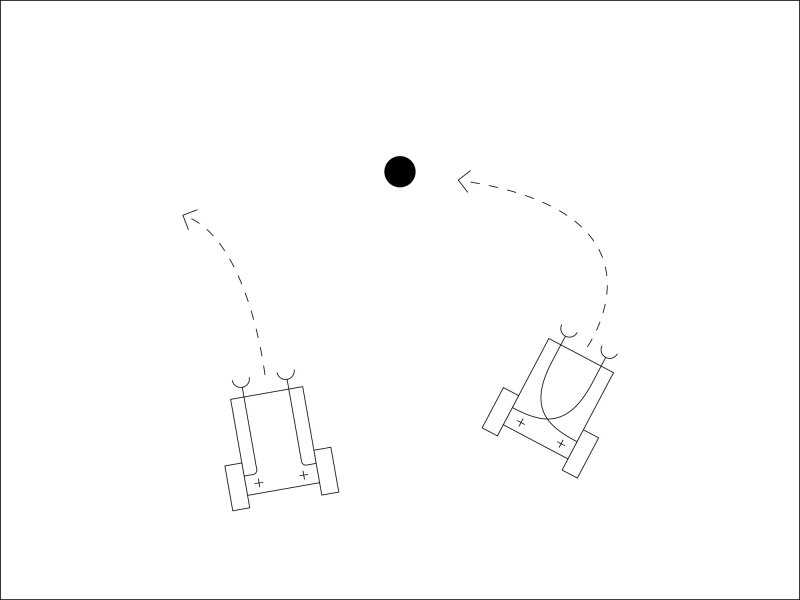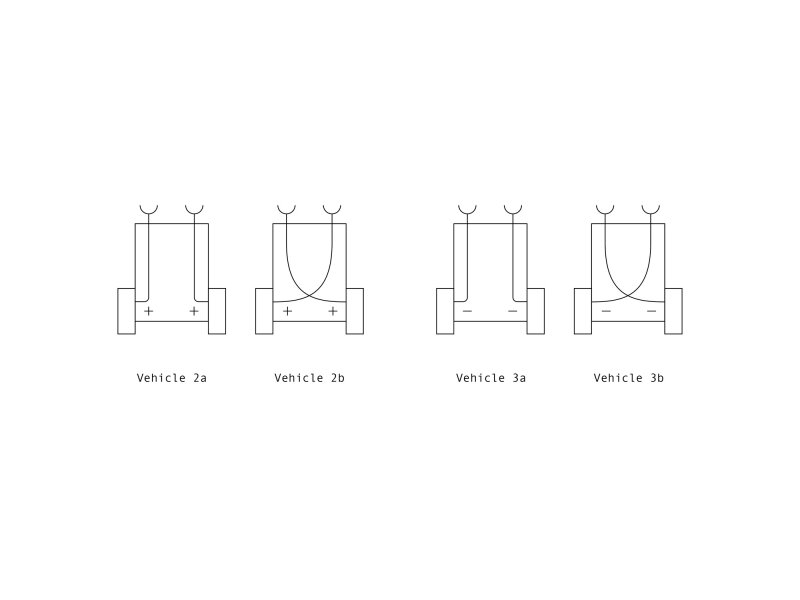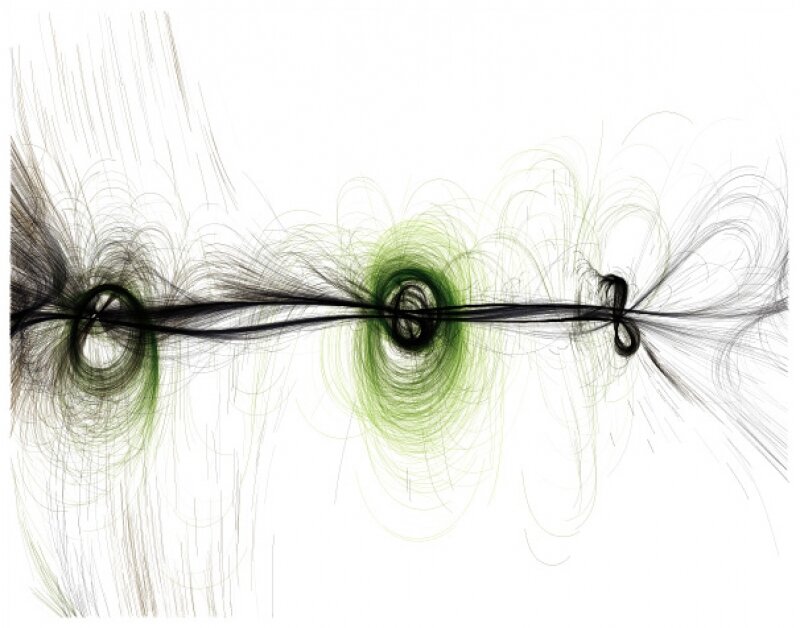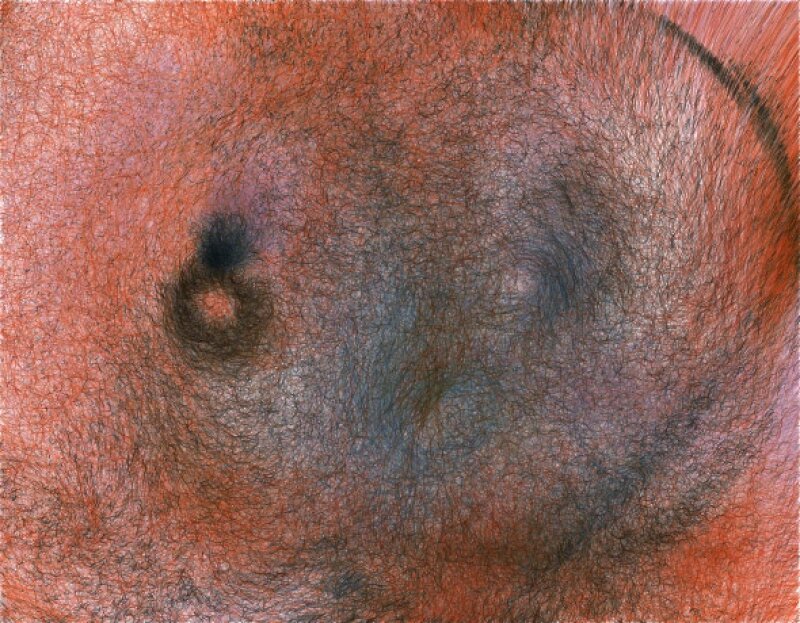
The movement of Vehicles 2a and 2b in relation to a stimulus.
The neuroanatomist Valentino Braitenberg published Vehicles: Experiments in Synthetic Psychology (MIT Press) in 1984.In this short, delightful book he presents conceptual schematics for fourteen unique synthetic creatures he called Vehicles. I became obsessed with these diagrams in 2000 while taking an artificial intelligence class at MIT. My Tissue and MicroImage projects were created entirely from software interpretations of Braitenberg's Vehicles 2 and 3.

The movement of Vehicles 2a and 2b in relation to a stimulus.
Vehicle 2 has two sensors, each connected to a motors. They are connected so that a strong stimulus will make the motors turn quickly and a weak stimulus will make the motors turn slowly. (If a sensor has no stimulus, the motor doesn't turn.) In Vehicle 2a, the left sensor is connected to the left motors and Vehicle 2b has crossed connections. If the sensor is attracted to light, for example, and there is a light in the room, Vehicle 2a will turn away from the light and Vehicle 2b will approach the light. Braitenberg characterizes these machines as correspondingly cowardly and aggressive to feature the anthropomorphic qualities we assign to moving objects.
Vehicle 3a and 3b are identical to Vehicle 2a and 2b, but the correlation between the sensor and the motor is reversed – a weak sensor stimulus will cause the motor to turn quickly and a strong sensor stimulus causes the motors to stop. Vehicle 3a moves toward the light and stops when it gets too close, and 3b approaches the light but turns and leaves when it gets too close.
If more than one stimulus is placed in the environment, these simple configurations can yield intricate paths of movement as they negotiate their attention between the competing stimuli. The Tissue images were created with three stimuli and the MicroImage images used five.


